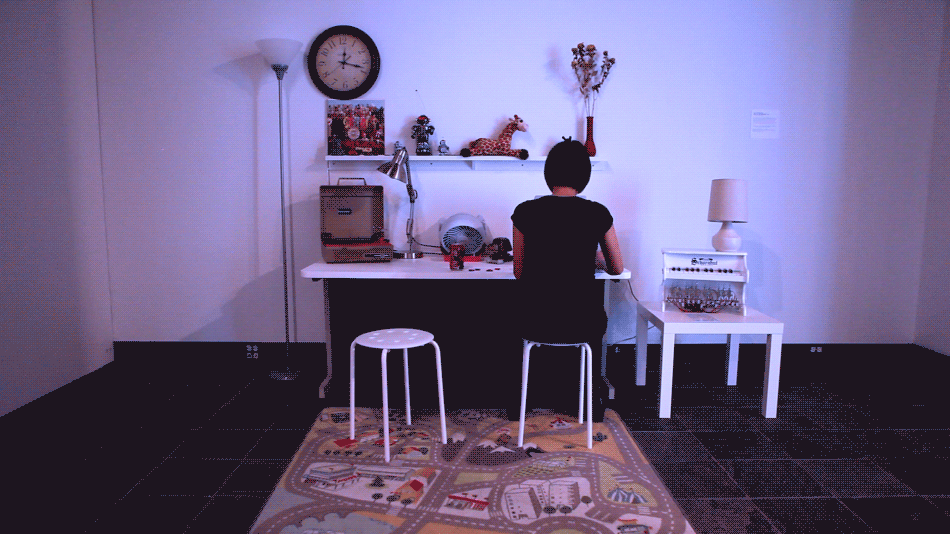Girl in the Machine combines digital storytelling with a dynamically changing environment. This was my senior Art thesis at CMU.
(Please see the video's description on its Youtube page to jump to specific events.)
DESCRIPTION
“She is 22 years old. Even then she still has dreams where she's 8 and walking through the halls of her old house by the lake. In those dreams everything is more alive than how she remembers them, yet hardly anything is in its right place. She hears the echo of a woman's voice from across the room and she is scared to go towards it because she knows that once she does, she'll wake up and the house is gone.
The familiar touch of cold marble presses against the soles of her feet and she decides to keep dreaming…for a little while.”
The piece is an interactive installation that has the appearance of a workstation decorated by nostalgic artifacts—such as a dusty record player, an old Beatles LP album, and a 90’s robot toy. On top of the workstation sits an old Macintosh Classic II computer, in which I embedded a ‘maze’ containing a file system that reconstructs the house I lived in as a child. Since the keyboard is absent the viewer can only use a trackball mouse to navigate through the ‘house’ and unlock the stories based on my childhood, all narrated by a synthesized version of my voice. Accessing certain memories causes special inanimate objects, controlled by an Arduino, to spring to life.



TECHNICAL DETAILS
All devices are driven by the Arduino UNO through solid-state relays with the exception of the toy piano, which is operated by the Arduino MEGA.
A Macintosh Classic II was disassembled and had its original hardware replaced with a Mac Mini. I then wrote an Applescript program that turns the Mac's file system into an interactive maze. When certain conditions are satisfied (e.g. the user opens special files or visits a folder a certain number of times), the program sends the Arduino serial messages that encode which devices should be activated.
ACKNOWLEGEMENTS
Girl in the Machine was created with support from a microgrant from the Frank-Ratchye Fund for Art @ the Frontier (FRFAF) — an endowment founded to encourage the creation of innovative artworks by the faculty, students and staff of Carnegie Mellon University. With this fund, the STUDIO seeks to develop a cache of groundbreaking projects created at CMU — works that can be described as “thinking at the edges” of the intersection of disciplines. You can see their video here!
I would also like to thank the ModelTalker team for making it possible for me to synthesize my voice completely free of charge.
LINKS